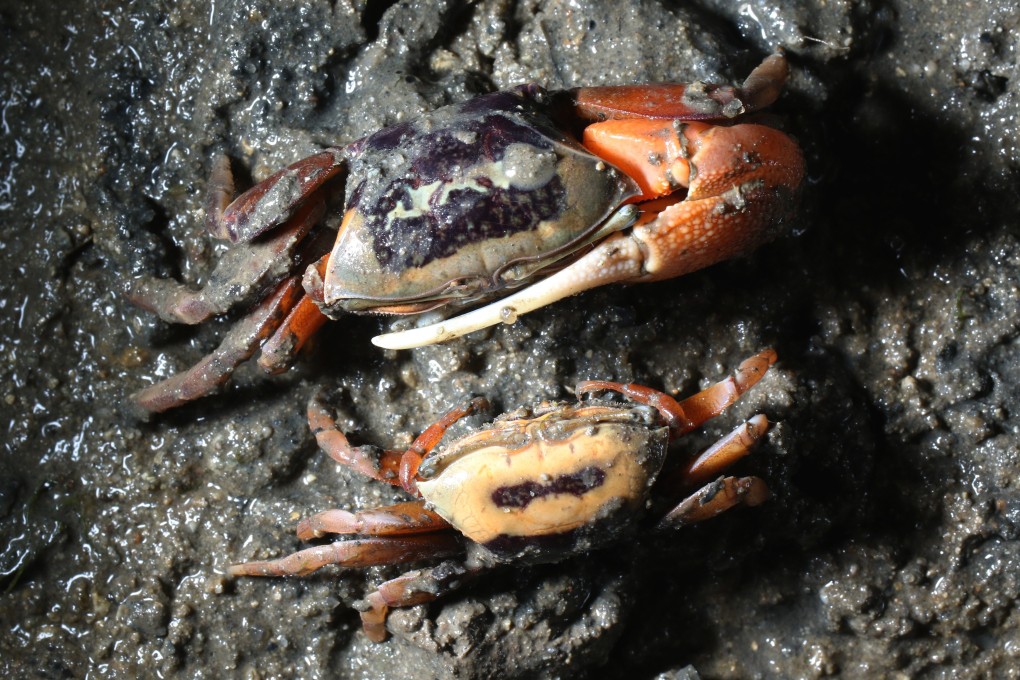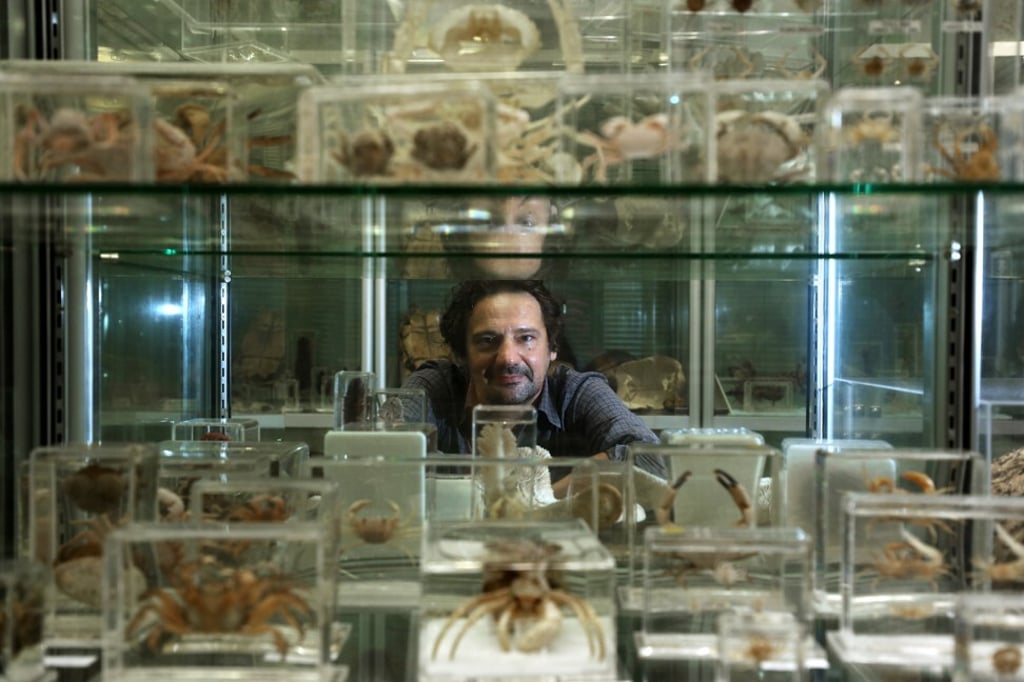How climate change threatens Hong Kong’s vital fiddler crabs and why the crustaceans are a natural oddity
- Fiddler crabs dig holes in the soil that mangroves grow in, providing the ecologically important plants with more oxygen
- Unlike similar species, you can easily determine the gender of fiddler crabs – males have an enormous, often brightly coloured claw used to attract females

Some of the vivid red fiddler crabs in the University of Hong Kong’s mangrove ecology lab are immediately visible, while others try to hide in the mud.
Without these creatures, mangroves – small trees and shrubs that grow in salty coastal waters – could die, says Stefano Cannicci, an associate professor in the university’s division of ecology and biodiversity.
Mangroves are a crucially important natural filtering and coastal protection system, Cannicci says. They absorb carbon from the air and trap water pollutants, while shielding coastlines from floods and storm surges.
“One big problem for mangrove trees is that there is no oxygen in the soil because of waterlogging,” says Cannicci, explaining that this is when soil is saturated with water, which decreases the amount of oxygen in it. “If you dig mangrove soil, you will find a few centimetres of normal soil and then pitch-black, smelly soil. That is the layer with no oxygen. These big trees have their roots in that layer.”

Fiddler crabs are something of a natural oddity. First, although it can be hard to determine the gender of some species of crabs, it’s easier with fiddlers as males sport an enormous, often brightly coloured claw, which can account for up to half of their body weight.